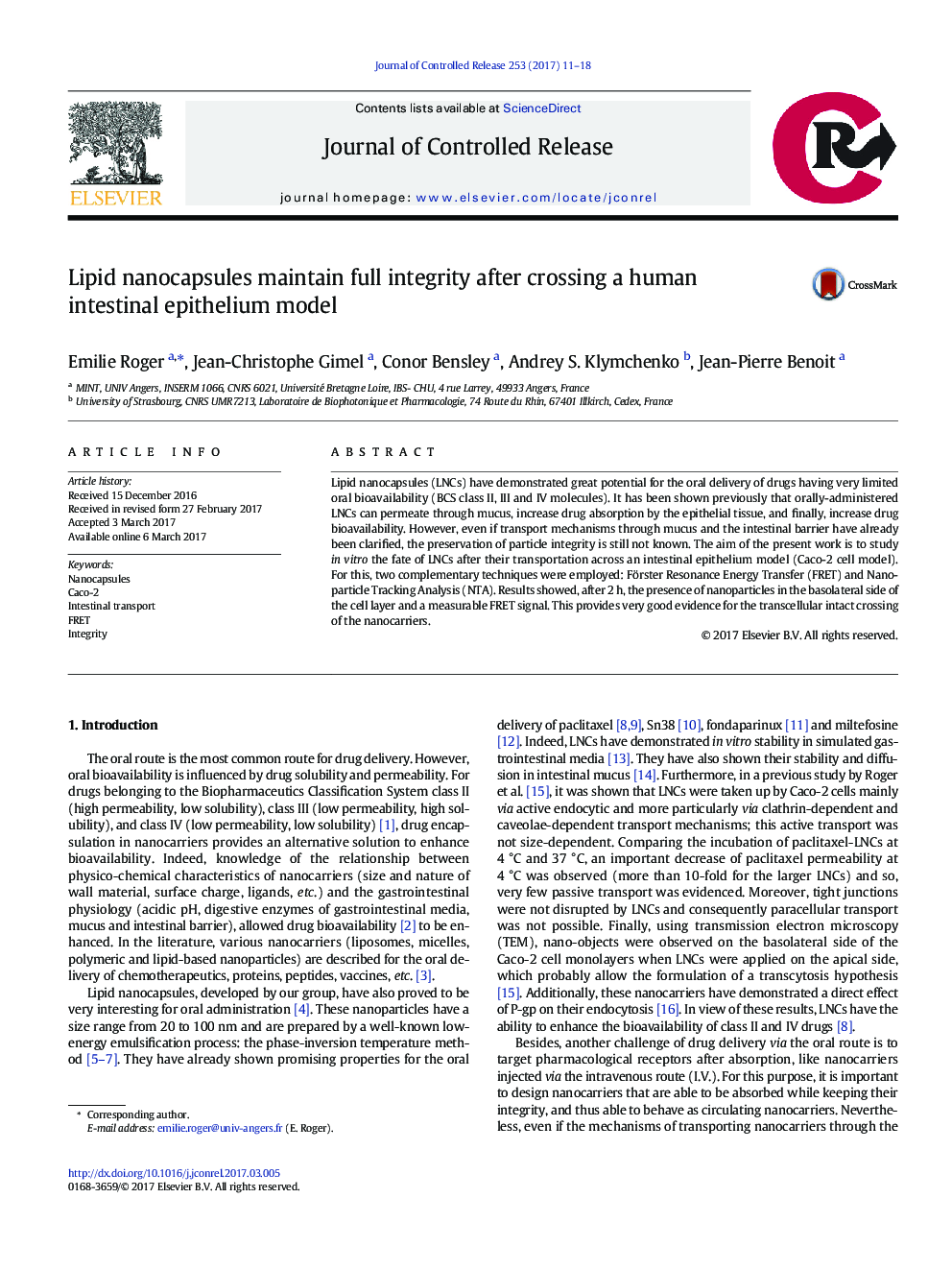| Article ID | Journal | Published Year | Pages | File Type |
|---|---|---|---|---|
| 5433556 | Journal of Controlled Release | 2017 | 8 Pages |
Lipid nanocapsules (LNCs) have demonstrated great potential for the oral delivery of drugs having very limited oral bioavailability (BCS class II, III and IV molecules). It has been shown previously that orally-administered LNCs can permeate through mucus, increase drug absorption by the epithelial tissue, and finally, increase drug bioavailability. However, even if transport mechanisms through mucus and the intestinal barrier have already been clarified, the preservation of particle integrity is still not known. The aim of the present work is to study in vitro the fate of LNCs after their transportation across an intestinal epithelium model (Caco-2 cell model). For this, two complementary techniques were employed: Förster Resonance Energy Transfer (FRET) and Nanoparticle Tracking Analysis (NTA). Results showed, after 2Â h, the presence of nanoparticles in the basolateral side of the cell layer and a measurable FRET signal. This provides very good evidence for the transcellular intact crossing of the nanocarriers.
Graphical abstractDownload high-res image (82KB)Download full-size image
